If you are using Chrome, click the red hand button at the top right of the screen:

Then select: Don't run on pages on this site
If you do it correctly, the red hand will turn to green and you will no longer see this message.
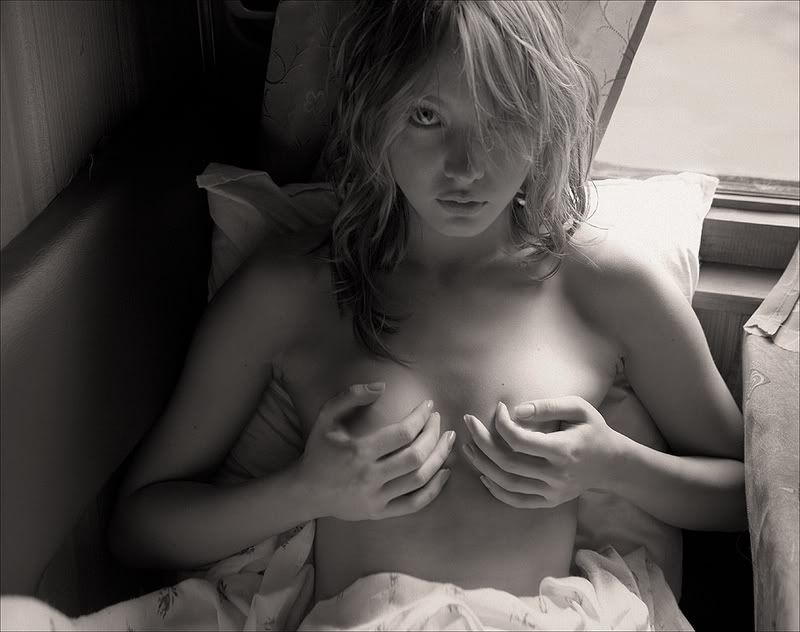
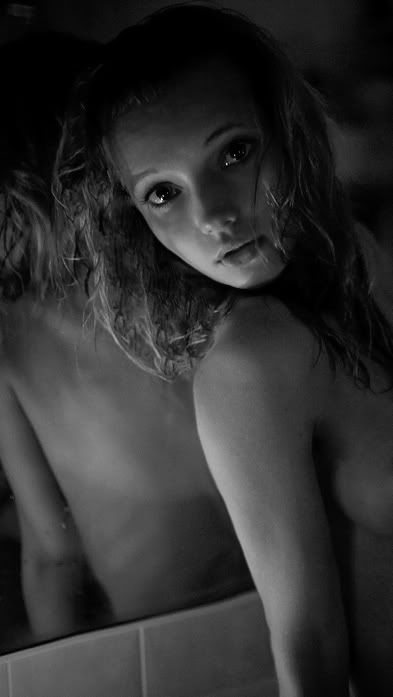
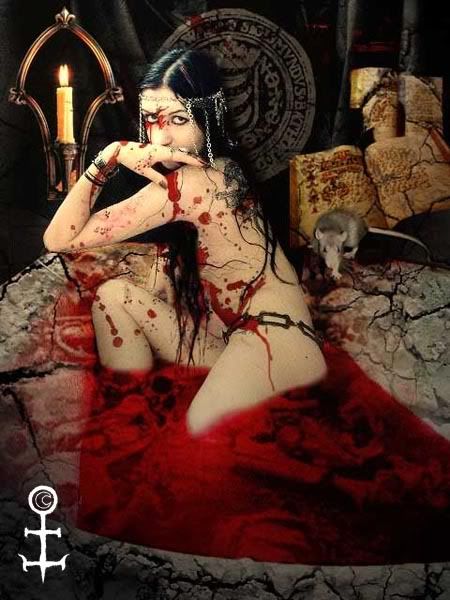
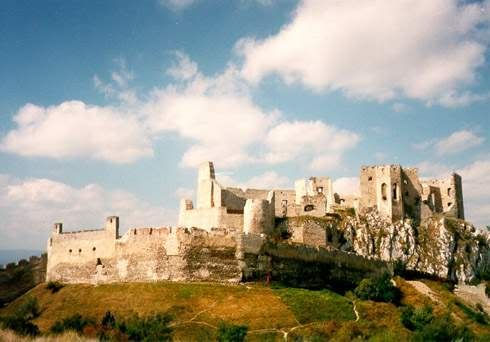
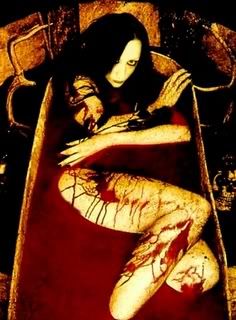
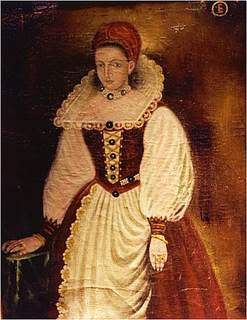
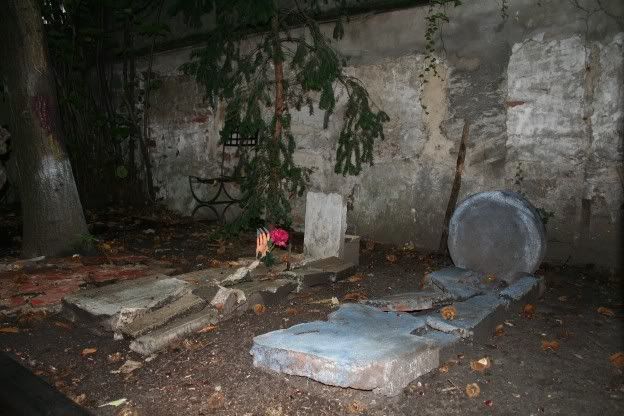




Mihai Eminescu(1850-1889),my favourite romanian poet, one man of a true romantic spirit, deserve to be more known.
While Eminescu is often described as the essence of the Romanian soul, modern literary language in Romania is also much indebted to him. His work encompassed every genre of poetry (love, philosophical, cosmological, mythological, historical, socio-satiric, etc.) as well as prose and journalism. Eminescu is considered Europe's last great romantic not in the least because he gave voice of such unmistakable music to the sadness of love. His legacy, however, transcends the confines of Romanticism, the literary and philosophical Western traditions, the far east influences and even the obvious imprint of the Romanian folklore. Blessed with the touch of genius, his synthesis is a personal world of meaning about the life of man and of the cosmos in archetypal images of universal worth.
Despite his national stature and unquestionable universal relevance, Mihai Eminescu (“Year 2000 UNESCO Poet-of-the-Year”) is little known to the American readership at large. Unconvincing translations are only partly to blame because access to good renditions is limited.
Here is a poem I`m in love.It is called
STILLNESS
So much stillness me surrounding I clearly seem to hear
them late-night moonbeams crushing now against my windows.
My chest’s
too strange a voice just woken up
and sings a song in me a will
mine not at all.
They say that all the ancestors who died
agelessly by chance,
dead veins young blooded still their own,
too great desires in blood their own,
still living sun in their desires,
come,
they always come to further live
in us
their merely unlived life.
So much stillness me surrounding I clearly seem to hear
them late-night moonbeams crushing now against my windows.
O, who knows – soul mine, whose chest shall lodge the echo singing
song yours in centuries to come
on strings of stillness still so sweet,
on darkness so the same a harp – the strangled will
and joy of life too broken still? who knows?
who knows?
by Lucian Blaga
The english translation of this poem and the song "Solitude" composed by Pourcell and interpreted by the band Elend on their "Weeping Nights" album (1997) could be found on my profile (in the Act 4 section).
Voice: Nathalie Barbary.

Solitude
translated by Katherine Philips (1632-1664)
after the original poem of St.Amant (1594-1661)
1
O! Solitude, my sweetest choice
Places devoted to the night,
Remote from tumult, and from noise,
How you my restless thoughts delight!
O Heavens! what content is mine,
To see those trees which have appear'd
From the nativity of Time,
And which hall ages have rever'd,
To look to-day as fresh and green,
As when their beauties first were seen!
2
A cheerful wind does court them so,
And with such amorous breath enfold,
That we by nothing else can know,
But by their hieght that they are old.
Hither the demi-gods did fly
To seek the sanctuary, when
Displeased Jove once pierc'd the sky,
To pour a deluge upon men,
And on these boughs themselves did save,
When they could hardly see a wave.
3
Sad Philomel upon this thorn,
So curiously by Flora dress'd,
In melting notes, her case forlorn,
To entertain me, hath confess'd.
O! how agreeable a sight
These hanging mountains do appear,
Which the unhappy would invite
To finish all their sorrows here,
When their hard fate makes them endure
Such woes, as only death can cure.

4
What pretty desolations make
These torrents vagabond and fierce,
Who in vast leaps their springs forsake,
This solitary Vale to pierce.
Then sliding just as serpents do
Under the foot of every tree,
Themselves are changed to rivers too,
Wherein some stately Nayade,
As in her native bed, is grown
A queen upon a crystal throne.
5
This fen beset with river-plants,
O! how it does my sense charm!
Nor elders, reeds, nor willows want,
Which the sharp steel did never harm.
Here Nymphs which come to take the air,
May with such distaffs furnish'd be,
As flags and rushes can prepare,
Where we the nimble frogs may see,
Who frighted to retreat do fly
If an approaching man they spy.
6
Here water-flowl repose enjoy,
Without the interrupting care,
Lest Fortune should their bliss destroy
By the malicious fowler's snare.
Some ravish'd with so bright a day,
Their feathers finely prune and deck;
Others their amorous heats allay,
Which yet the waters could not check:
All take their innocent content
In this their lovely element.
7
Summer's, nor Winter's bold approach,
This stream did never entertain;
Nor ever felt a boat or coach,
Whilst either season did remain.
No thirsty traveller came near,
And rudely made his hand his cup;
Nor any hunted hind hath here
Her hopeless life resigned up;
Nor ever did the treacherous hook
Intrude to empty any brook.
8
What beauty is there in the sight
Of these old ruin'd castle-walls
Of which the utmost rage and spight
Of Time's worst insurrection falls?
The witches keep their Sabbath here,
And wanton devils make retreat.
Who in malicious sport appear,
Our sense both to afflict and cheat;
And here within a thousand holes
Are nest of adders and of owls.
9
The raven with his dismal cries,
That mortal augury of Fate,
Those ghastly goblins ratifies,
Which in these gloomy places wait.
On a curs'd tree the wind does move
A carcase which did once belong
To one that hang'd himself for love
Of a fair Nymph that did him wrong,
Who thought she saw his love and truth,
With one look would not save the youth.
10
But Heaven which judges equally,
And its own laws will still maintain,
Rewarded soon her cruelty
With a deserv'd and mighty pain:
About this squalid heap of bones,
Her wand'ring and condemned shade,
Laments in long and piercing groans
The destiny her rigour made,
And the more to augment her right,
Her crime is ever in her sight.
11
There upon antique marbles trac'd,
Devices of past times we see,
Here age ath almost quite defac'd,
What lovers carv'd on every tree.
The cellar, here, the highest room
Receives when its old rafters fail,
Soil'd with the venom and the foam
Of the spider and the snail:
And th'ivy in the chimney we
Find shaded by a walnut tree.
12
Below there does a cave extend,
Wherein there is so dark a grot,
That should the Sun himself descend,
I think he could not see a jot.
Here sleep within a heavy lid
In quiet sadness locks up sense,
And every care he does forbid,
Whilst in arms of negligence,
Lazily on his back he's spread,
And sheaves of poppy are his bed.
13
Within this cool and hollow cave,
Where Love itself might turn to ice,
Poor Echo ceases not to rave
On her Narcissus wild and nice:
Hither I softly steal a thought,
And by the softer music made
With a sweet lute in charms well taught,
Sometimes I flatter her sad shade,
Whilst of my chords I make such choice,
They serve as body to her voice.
14
When from these ruins I retire,
This horrid rock I do invade,
Whose lofty brow seems to inquire
Of what materials mists are made:
From thence descending leisurely
Under the brow of this steep hill
It with great pleasure I descry
By waters undermin'd, until
They to Palaemon's seat did climb,
Compos'd of sponges and of slime.
15
How highly is the fancy pleas'd
To be upon the Ocean's shore,
When she begins to be appeas'd
And her fierce billows cease to roar!
And when the hairy Tritons are
Riding upon the shaken wave,
With what strange sounds they strike the air
Of their trumpets hoarse and brave,
Whose shrill reports does every wind
Unto his due submission bind!
16
Sometimes the sea dispels the sand,
Trembling and murmuring in the bay,
And rolls itself upon the shells
Which it both brings and takes away.
Sometimes exposed on the strand,
Th'effect of Neptune's rage and scorn,
Drown'd men, dead monsters cast on land,
And ships that were in tempests torn,
With diamonds and ambergreece,
And many more such things as these.
17
Sometimes so sweetly she does smile,
A floating mirror she might be,
And you would fancy all that while
New Heavens in her face to see:
The Sun himself is drawn so well,
When there he would his picture view,
That our eye can hardly tell
Which is the false Sun, which the true;
And lest we give our sense the lie,
We think he's fallen from the sky.
18
Bernieres! for whose beloved sake
My thoughts are at a noble strife,
This my fantastic landskip take,
Which I have copied from the life.
I only seek the deserts rough,
Where all alone I love to walk,
And with discourse refin'd enough,
My Genius and the Muses talk;
But the converse most truly mine,
Is the dear memory of thine.
19
Thou mayst in this Poem find,
So full of liberty and heat,
What illustrious rays have shin'd
To enlighten my conceit:
Sometimes pensive, sometimes gay,
Just as that fury does control,
And as the object I survey
The notions grow up in my soul,
And are as unconcern'd and free
As the flame which transported me.
20
O! how I Solitude adore,
That element of noblest wit,
Where I have learnt Apollo's lore,
Without the pains to study it:
For thy sake I in love am grown
With what thy fancy does pursue;
But when I think upon my own,
I hate it for that reason too.
Because it needs must hinder me
From seeing, and from serving thee.
~~~~~~~~~~~~~~~~~
Antoine Girard Saint-Amant (1594-1661): "a poet, born at Rouen, the son of a naval officer. He was the boon companion of the comte d'Harcourt, whom he accompanied on his campaigns and sea-voyages and in a mission to England in 1643, and later a follower of Marie de Gonzague, Queen of Poland. He was a freethinker and a remarkable poet, vivid and realistic, especially in his songs of the tavern. He was the author of picturesque, some of them burlesque, lyrics and of a long tedoius epic on Moses, Moïse sauvé (1653). The bizarre and whimsical quality of some of his verse is seen in his well-known sonnet, Les Goinfres and in the longer poem, La Solitude. He was one of the original members of the Académie, but was condemned by Boileau [from The Oxford Companion to French Literature, compiled and edited by Sir Paul Harvey and J. E. Heseltine, Oxford: 1959].
Dracula in Romania
After the death of Nicolae Ceausescu, a tourist industry sprang up in Transylvania and, to a lesser extent, in Wallachia. However, Romanians have mixed feelings about linking one of their national heroes to the vampire monster.
Historical places connected to Vlad Tepes are publicised under a Dracula theme catering largely, but not entirely, to foreign markets. Bran Castle, which has only a very tangential connection with the historical Vlad Tepes, now exaggerates that connection and promotes itself as "Dracula's Castle". A dungeon-themed disco, catering to a mostly Romanian crowd and located in the basement of a former inn immediately adjacent to the Curtea Veche ("Old Court") — onetime site of Vlad Tepes 's castle in Bucharest — calls itself by the English-language name "Impaler". The well-preserved medieval town of Sighisoara, Vlad Tepes 's birthplace, seriously considered building a Dracula theme park on the edge of town, but in the end it was decided that such a site would cheapen the beauty and history of the medieval city, and the plan was blocked. The park was then to have been built close to Bucharest (the capital, which is nowhere near Transylvania), but plans have subsequently been scrapped.
Literary significance & criticism
Historically, the name "Dracula" is derived from a secret fraternal order of knights called the Order of the Dragon, founded by Sigismund of Luxembourg (king of Hungary, Croatia and Bohemia, and Holy Roman Emperor) to uphold Christianit and defend the Empire against the Ottoman Turks. Vlad II Dracul, father of Vlad III, was admitted to the order around 1431 because of his bravery in fighting the Turks. From 1431 onward, Vlad II wore the emblem of the order and later, as ruler of Wallachia, his coinage bore the dragon symbol. Either because the people believed the dragon to represent the devil, or of the fact that the Romanian archaic word for dragon was "drac" (see Dacian Draco), his subjects called him Vlad Dracul (Vlad the Devil). In archaic Romanian the ending -ulea meant "the son of". Vlad III thus became Vlad Draculea, "The Son of the Devil" (or "of the Dragon") .
Certainly Stoker did find the name Dracula in his reading on Romanian history. This became a replacement for the name Count Wampyr, which he had intended to use for his villain. Dracula scholars led by Elizabeth Miller, have questioned the depth of this connection: they argue that Stoker infact knew little of Vlad himself, other than the name Dracula, which was attributed to him. Nonetheless, there are certainly sections in the novel, in which Dracula recounts his history, albeit in a garbled manner, where it shows that he did consult on Romanian history (which gives few details on Vlad's reign and does not mention his use of impalement as foreign sources do). But given Stoker's meticulous use of historical background to make his novel more horrific, it seems unlikely he would have failed to mention that his villain Dracula had impaled thousands of people, if he had known a considerable deal of information on Vlad (but Stoker could have easily chosen not to add this information). Other than the blood drinking accounts, during his lifetime Vlad was never stated to be a vampire per se. Vlad is clearly an ethnic Vlach. In the novel, Dracula claims to be a Székely - "We Szekelys have a right to be proud..." —. However, few lines down, Dracula claims ancestry from the Wallachian Voivodes -"Who was it but one of my own race who as Voivode crossed the Danube and beat the Turk on his own ground? This was a Dracula indeed!"— This suggests either that Stoker had limited knowledge of the historical facts, or that he deliberately created a fussion of the different elements he found during research reading (the Transylvanian-born and supposed blood-drinker Vlad Dracula of Wallachia, and the Szeckelys with supposed Hunnic descent).
In writing Dracula, Stoker may also have drawn on stories about the sídhe — some of which feature blood-drinking women — and the Dracula legend as he created it and as it has been portrayed in films and television shows ever since may be a compound of various influences. Many of Stoker's biographers and literary critics have found strong similarities to the earlier Irish writer Sheridan le Fanu's classic of the vampire genre, Carmilla.
It has been suggested that Stoker was influenced by the history of Countess Elizabeth Bathory, who was born in the Kingdom of Hungary. It is believed that Bathory tortured and killed up to 700 servant girls in order to bathe in or drink their blood. She believed their blood preserved her youth, which may explain why Dracula appeared younger after feeding.
Some have claimed the castle of Count Dracula was inspired by Slains Castle, at which Bram Stoker was a guest of the 19th Earl of Erroll. However, as Stoker visited the castle in 1895, five years after work on Dracula had started, there is unlikely to be much connection. Many of the scenes in Whitby and London are based on real places that Stoker frequently visited, although in some cases he misrepresents the geography for the sake of the plot.
It has been suggested that Stoker received much historical information from Arminius Vámbéry, a Hungarian professor he met at least twice. Miller argues that "there is nothing to indicate that the conversation included Vlad, vampires, or even Transylvania" and that, "furthermore, there is no record of any other correspondence between Stoker and Vambery, nor is Vambery mentioned in Stoker's notes for Dracula."
The novel is narrated by multiple voices — Jonathan's journal of his trip to Transylvania, Mina's diary, and Seward's recorded journal, as well as letters and newspaper items. It is highly praised by virtually all its fans for Stoker's highly complex, albeit naively idealistic, characterization and character development. Almost superhuman acts and attitudes of loyalty and friendship bond the protagonists together through situations that would utterly rend atwain analogous relationships in modern novels, television, and film. This is illustrated perhaps nowhere else more clearly than in Quincey's, John's, and Arthur's love for Lucy; rather than the feelings of jealousy that would doubtless come into play at the hands of another author, their shared love for dead/undead/re-dead Lucy instead sparks in them deep feelings of comaraderie and respect when each of the men realizes that either of the other two would have given his life, without hesitation, to keep her from harm. A similar situation later plays out when all five male protagonists seem to find themselves falling in love with Mina.
Although some, by contrast, find the novel somewhat crude and sensational, it nevertheless retains its psychological power, and the sexual longings underlying the vampire attacks are manifest. As one critic wrote:
What has become clearer and clearer, particularly in the fin de siècle years of the twentieth century, is that the novel's power has its source in the sexual implications of the blood exchange between the vampire and his victims...Dracula has embedded in it a very disturbing psychosexual allegory whose meaning I am not sure Stoker entirely understood: that there is a demonic force at work in the world whose intent is to eroticize women. In Dracula we see how that force transforms Lucy Westenra, a beautiful nineteen-year-old virgin, into a shameless slut. (Leonard Wolf, "Introduction" to the Signet Classic Edition, 1992).
Dracula may be viewed as a novel about the struggle between tradition and modernity at the fin de siècle. Throughout, there are various references to changing gender roles; Mina Harker is a thoroughly modern woman, as she uses (then) modern technologies such as the typewriter, but she still embodies a traditional gender role as an assistant schoolmistress.
Stoker's novel deals in general with the conflict between the world of the past — full of folklore, legend, and religious piety — and the emerging modern world of technology, logical positivism, and secularism.
Van Helsing epitomizes this struggle because he uses, at the time, extremely modern technologies like blood transfusions; but he is not so modern as to eschew the idea that a demonic being could be causing Lucy's illness: he spreads garlic around the sashes and doors of her room and makes her wear a garlic necklace. After Lucy's death, he receives an indulgence from a Catholic cleric to use the Eucharist (held by the Church to be transsubstantiated into the body and blood of Jesus) in his fight against Dracula. In trying to bridge the rational/superstitious conflict within the story, he cites then-new sciences, such as hypnotism, that were only recently considered magical. He also quotes (without attribution) the American psychologist William James, whose writings on the power of belief become the only way to deal with this conflict.
Jonathan Harker's character displays the problems of dwelling in a strictly rational modern world. Visiting Count Dracula in Eastern Europe, Jonathan scoffs at the peasants who tell him to delay his visit until after Saint George's feast day. As a solicitor, Jonathan is concerned “with facts — bare meagre facts, verified by books and figures, and of which there can be no doubt”. All of Jonathan’s rationality weakens him to what he witnesses at Castle Dracula. For example, the first time Jonathan witnesses the count crawling down the castle face down, he is in complete disbelief. Not believing what he sees, he attempts to explain what he saw as a trick of the moonlight.
The characters of Dracula use (then) modern technology and rationalism to defeat the count. For example, during their pursuit of the vampire, they use railroads and steamships, not to mention the telegraph, to keep a step ahead of him (in contrast, the count escapes in a sailboat). Van Helsing uses the aforementioned method of hypnotism to pinpoint Dracula's location. Mina even employs the then-primitive field of criminology to anticipate the count's actions and cites both Cesare Lombroso and Max Nordau, who at that time were considered experts in this field.
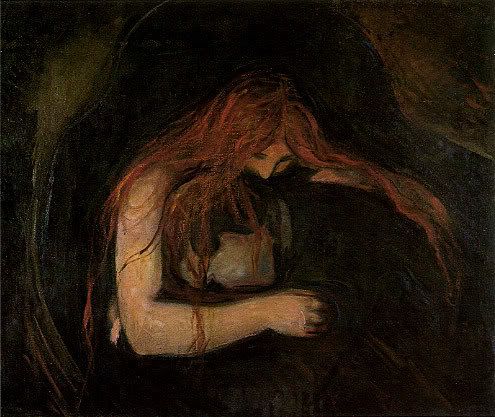
Today I have taken a great resp:
to be a real member in the Greatest Coven ... ever
and I`m trying to do my best.
The wise will know the answer.

Vampires exist in folklore and in reality in all countries and culture. I am also a hybrid vampire (sanguine, psi, elemental feeding). Although I started out as a blood drinker at (4 years old) prior to my vampiric awakening; I now feed all vampiric ways. Real Vampires are mortal humans with immortal souls through reincarnation.
Vampire souls are not satanic in nature. Vampiric souls are from Sheol/Bardo which is neither hell, nor heaven, nor purgatory nor earth, but a different spiritual realm. We vampires believe Sheol (spiritual resting place of the vampire) existed prior to creation. Sheol is the dark space that surrounded God prior to creation. It is my belief all creation came from Sheol until God created creation and light within that creation. Vampires are the indirect blood line of God by way of Angels and humans. Vampires inherit immortality from the Angelic side of our family. This immortality of the vampire soul is retained through reincarnation. From the human side of our family :we retain rebirth into this earth in mortal families with immortal souls. In each lifetime a vampire has an awakening through dreams, visions, communication with angels/spirits/God, and vampire ancestors, out of body experiences, near death experiences, astral projection that lead the vampire to believe that he or she has lived before in a past life.
The vampire faith unlike many faiths that believe in immortality through reincarnation differs in that we do not believe in past life regression. More simply stated we believe that immortality through reincarnation is our birth right/rite as vampires and the indirect blood line of God by way of angels and humans.
Past life regression believes that people are reincarnated to complete or learn some lesson that was not accomplished in past lives. The vampire life progression believes that we are reincarnated because vampires are the guardians of humanity and Iswarakotis as the Hindus might say.

I have find some useful classification of the vampires:
Various Types of Vampires Not A Complete List.
1. Prana/Psi
- feed of the energy of people. http://vampires.monstrous.com/biological_vampires.htm
2. Sanguine
-Feed off human blood and may also feed off prana.http://vampires.monstrous.com/biological_vampires.htm
3. Antonarian http://www.exodusfromthedenofdemons.com -
these vampires feed off prana energy, human blood, and the energy of God. These vampires also believe they are immortal through Reincarnation, they are inhabitants of Sheol (Sheolonians) which is not hell, and are the blood of God. Antonarian vampires believe blood can be stored and consumed overtime and that blood fulfills the prophecy on the Gates of Sheol which reads "Man consumes the blood of God and the blood of God consumes the blood of man. Unlike the none specific vampire Antonarian vampires
believe that Sheol is the Life Force from which everything came from and that they are guardians of humanity so they consume the blood of man to connect to the souls of man so they maybe Better Guardians.
4. Resonance and Elemental Vampires
- Vampires who feed sanguine, prana and off of the elements such as earth, wind, fire, water masses.
http://vampires.monstrous.com/biological_vampires.htm
5. Supine Vampires
-feed off blood (sanguine) and must be invited everywhere. http://vampires.monstrous.com/biological_vampires.htm
6. Vampire none specific
-feed off blood and believe only blood straight from the vein is contains the vampiric life force vice the vampire from Sheol being the life force of all, more likely to be devout followers of the black veil
concept. http://vampires.monstrous.com/biological_vampires.htm
7. Kheperian Vampires
- Consume blood/psi, have high self esteem and adore compliments and praise.
http://vampires.monstrous.com/biological_vampires.htm
8. Empath Vampires
- can feel what others are feeling and can read thoughts almost all vampires have some empath or psychic gifts but the Empath Vampire is by far the most gifted in this area. The feed various ways.
Note: This is not a complete list of all the various types of vampires just the ones I have researched if anyone knows of anymore please email me and let me know. Also I speak of what I know about vampires which does not mean there is not more knowledge and details out there about all the vampires listed here and more vampires not listed here.

COMMENTS
-